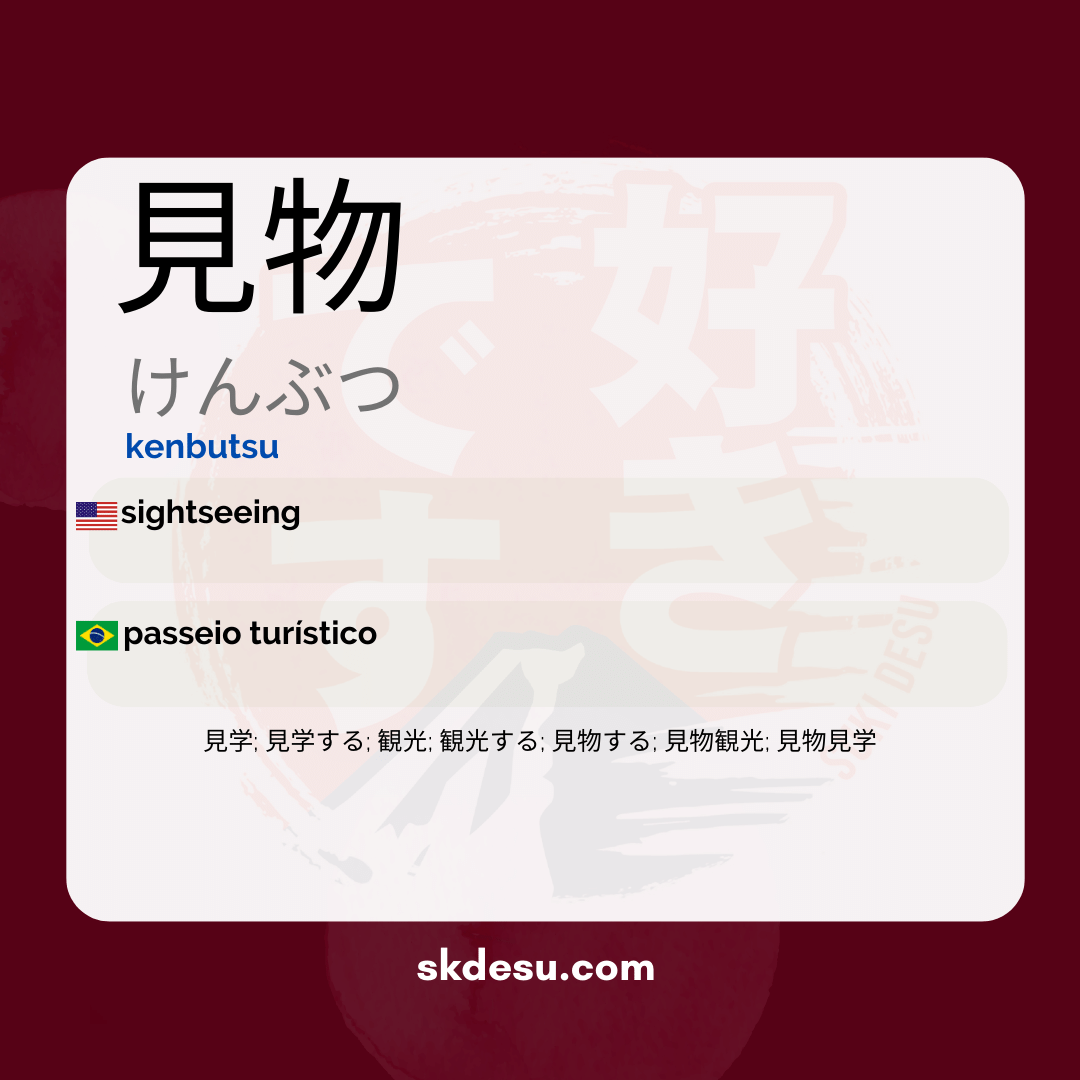Translation and Meaning of: 見物 - kenbutsu
The Japanese word 見物 [けんぶつ] may seem simple at first glance, but it carries interesting nuances for those learning the language or interested in Japanese culture. In this article, we will explore its meaning, origin, and how it is used in daily life, as well as curiosities that can aid in memorization. If you've ever wondered how the Japanese use this term in different contexts, keep reading to find out.
Meaning and use of 見物
見物 [けんぶつ] is composed of the kanji 見 (to see, to observe) and 物 (thing, object), forming a term that means "observation" or "spectacle." However, its use goes beyond the literal sense. It is often used to describe the action of watching something with interest, such as a cultural event, a theater play, or even a natural phenomenon.
An interesting detail is that 見物 is not limited to formal situations. It can be used for both a tourist visit and for observing something everyday, as long as there is a certain level of curiosity involved. For example, watching a traditional festival or even "sneaking a peek" at an unusual scene on the street can be called 見物.
Origin and Evolution of the term
The origin of 見物 dates back to the Heian period (794-1185), when the Japanese imperial court valued the appreciation of spectacles and artistic events. At that time, the word already carried the idea of observing something with attention and appreciation, often linked to entertainment activities of the nobility.
Over time, the term became popular and began to be used in broader contexts. Today, it still retains its essence of keen observation, but without the old formality. It is common to see it on tourist signs, event descriptions, and even in informal conversations about something worth seeing.
Tips for memorizing and using correctly
An effective way to remember the meaning of 見物 is to associate its kanjis with the action of "seeing things." The first character, 見, appears in several other words related to vision, such as 見学 (observing classes) and 見える (to be visible). Meanwhile, 物 is a common kanji that indicates objects or concrete things.
To practice, try using 見物 in sentences like "That festival is worth seeing" or "I visited the temples in Kyoto." These examples show how the term can be applied in real situations, helping to reinforce its meaning and usage.
Vocabulary
Expand your vocabulary with related words:
Synonyms and similar words
- 見学 (kengaku) - Visit for study or learning, usually at educational institutions.
- 見学する (kengaku suru) - Act of making a visit to learn or study.
- 観光 (kankou) - Tourism, visiting places of interest usually for leisure.
- 観光する (kankou suru) - Act of practicing tourism, visiting tourist spots.
- 見物する (kenbutsu suru) - The act of observing or seeing something, often associated with tourism.
- 見物観光 (kenbutsu kankou) - Visiting places with the aim of observing and appreciating can combine aspects of learning and tourism.
Romaji: kenbutsu
Kana: けんぶつ
Type: noun
L: jlpt-n4
Translation / Meaning: sightseeing tour
Meaning in English: sightseeing
Definition: Mainly to see and enjoy famous cities and places.
Quick Access
- Vocabulary
- Writing
- Sentences
How to Write in Japanese - (見物) kenbutsu
See below a step-by-step guide on how to write the word by hand in Japanese. (見物) kenbutsu:
Example Sentences - (見物) kenbutsu
See below some example sentences:
Nenhum resultado encontrado.
Other Words of this Type: noun
See other words from our dictionary that are also: noun

